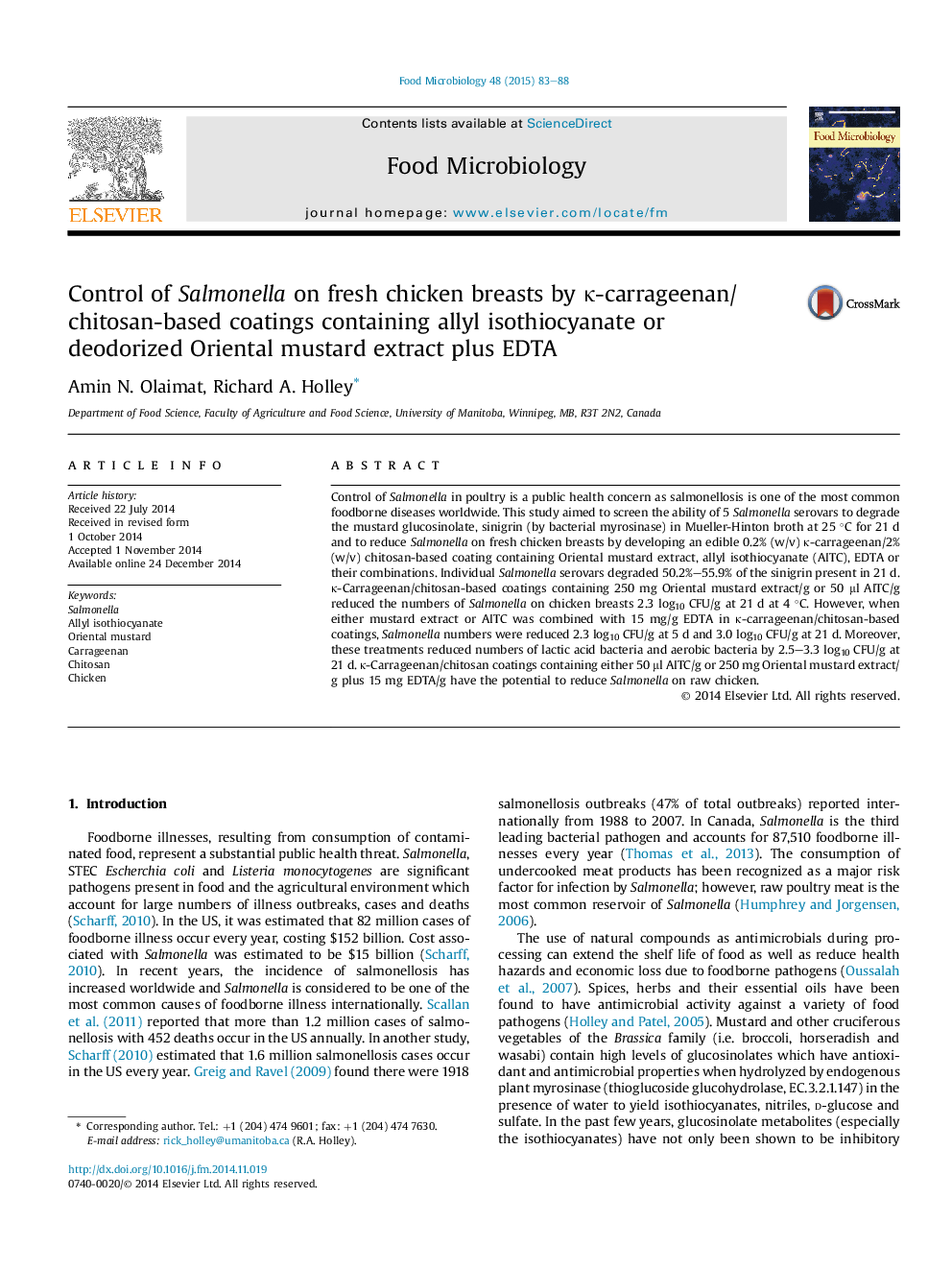| Article ID | Journal | Published Year | Pages | File Type |
|---|---|---|---|---|
| 4362791 | Food Microbiology | 2015 | 6 Pages |
•Salmonella strains degraded >50% of sinigrin at 25 °C by 21 d.•κ-Carrageenan/chitosan coatings containing Oriental mustard or AITC were antimicrobial.•Coatings with 50 μl AITC/g or 250 mg mustard/g reduced Salmonella 2.3 log at 21 d.•On coated chicken 15 mg/g EDTA with mustard or AITC reduced Salmonella 3 log.
Control of Salmonella in poultry is a public health concern as salmonellosis is one of the most common foodborne diseases worldwide. This study aimed to screen the ability of 5 Salmonella serovars to degrade the mustard glucosinolate, sinigrin (by bacterial myrosinase) in Mueller-Hinton broth at 25 °C for 21 d and to reduce Salmonella on fresh chicken breasts by developing an edible 0.2% (w/v) κ-carrageenan/2% (w/v) chitosan-based coating containing Oriental mustard extract, allyl isothiocyanate (AITC), EDTA or their combinations. Individual Salmonella serovars degraded 50.2%–55.9% of the sinigrin present in 21 d. κ-Carrageenan/chitosan-based coatings containing 250 mg Oriental mustard extract/g or 50 μl AITC/g reduced the numbers of Salmonella on chicken breasts 2.3 log10 CFU/g at 21 d at 4 °C. However, when either mustard extract or AITC was combined with 15 mg/g EDTA in κ-carrageenan/chitosan-based coatings, Salmonella numbers were reduced 2.3 log10 CFU/g at 5 d and 3.0 log10 CFU/g at 21 d. Moreover, these treatments reduced numbers of lactic acid bacteria and aerobic bacteria by 2.5–3.3 log10 CFU/g at 21 d. κ-Carrageenan/chitosan coatings containing either 50 μl AITC/g or 250 mg Oriental mustard extract/g plus 15 mg EDTA/g have the potential to reduce Salmonella on raw chicken.
